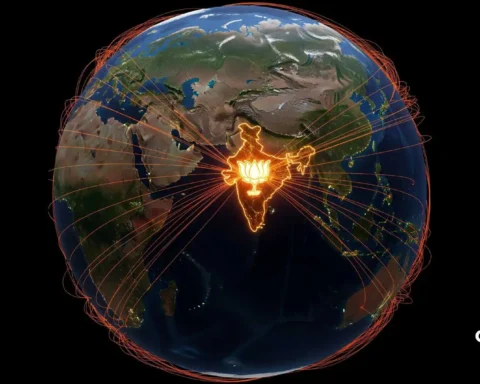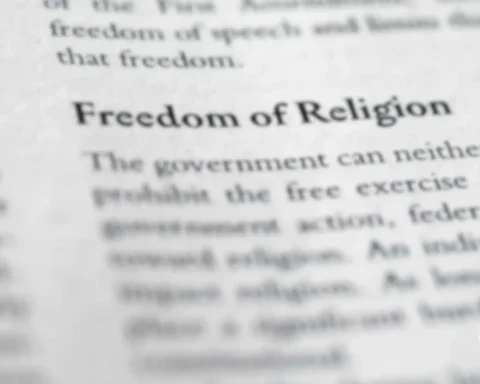A multi-party system is a political system that allows multiple political parties to have the opportunity to come to power and gain control of government offices, either separately or in coalition. Unlike a two-party system in which the power is typically in the hands of two major parties, a multi-party system allows a broader range of political ideologies and ideas to be presented in government. This type of system is in many countries worldwide, including India, Germany, and Israel.
Table of Contents
How a Multi-Party System Works?
In a multi-party system, proportional representation is often used, where the percentage of votes a party receives corresponds to the number of votes it gets in the legislature. It contrasts with a winner-take-all or single-member district system, which often favours larger parties. Proportional representation ensures that even smaller parties that do not have larger representation or popularity across all districts can still win seats, showing us the diversity of the electorate.
A coalition government is formed when no single party wins a majority of seats. This involves two or more parties negotiating and agreeing to work together and forming a government by having shared cabinet positions or following a common policy agenda. The most important feature of a multi-party system is its importance in compromise and consensus-building. To make a proper and stable government, parties must find a common ground to work on. It is a very slow and complex process, but it will lead to more inclusive and broadly supported policies.

Broader Representation
A multi-party system has the most compelling advantages, which include broader representation of diverse interests. When more parties are present, a wider range of political views, including those from small businesses, environmentalists, and advocates, can have a voice in the government. It is required in countries like India, which has a diverse population, as it voices up the marginalised groups whose views do not align with the platforms of the two major parties.
For example, in a two-party system, a small but significant group of voters who are focused on environmental protection might find neither of the main parties addressing their concerns adequately. In a multi-party system, a specific environmental protection party might form, giving these voters a direct way to influence policy. This system helps foster political inclusion and reduce apathy.
Increased Stability and Accountability
A multi-party system leads to greater stability of the government, and accountability increases. A coalition government requires a lot of compromise and is often more resistant to radical shifts in government policies. This happens because multiple parties must agree on policy changes and the course of action, which tend to be more moderate and incremental.
In a party system, dramatic policy changes might happen, in which the power shifts from one party to another drastically. Hence, the coalition parties mean that a party in power must frequently negotiate and justify its actions, providing a built-in system of checks and balances. If one party in the coalition government behaves badly, its partner party can withdraw their support, which leads to the collapse of the government and forces new elections. This creates a strong sense of accountability among parties to act responsibly and be held accountable to their partners and the public.
Policy Innovation and Responsiveness
Multi-party systems can be very dynamic and responsive to public opinion. The presence of many parties that are competing for votes encourages innovation in public policy proposals. Smaller parties introduce new and sometimes radical ideas that bigger and more established parties might be hesitant to adopt.
Over time, these ideas can gain attraction, which the bigger parties might adopt, which will lead to a richer and more varied political discourse. This competitive environment ensures that wider solutions to social and economic problems are debated and considered. It forces political parties to be more active in changing public attitudes. If a new social or economic issue emerges, a new party can be formed, emphasising the issue and addressing it properly, pushing the entire political landscape to adapt.
Conclusion
A multi-party system is a very complex and dynamic form of government. It has the potential to form instability, offering significant benefits such as providing broader representation, fostering political stability by compromising, and encouraging innovation and responsiveness, which leads to a more democratic and inclusive society. Forming a coalition government can be challenging, but the system gives voice to a wider range of people and holds people accountable who are in power for any mishap. This makes this model of government a very compelling model of governance in the modern world.

FAQs
What is a multi-party system?
A multi-party system is a political system where several political parties compete for power and hold realistic chances of forming a government, often by forming coalitions with other parties.
Is Russia a multi-party system?
According to the Constitution of Russia, the President of Russia is head of state, and of a multi-party system with executive power exercised by the government, headed by the Prime Minister, who the President appoints with the Parliament’s approval.
Is China a multi-party system?
The People’s Republic of China (PRC) is a one-party state ruled by the Chinese Communist Party (CCP). Despite this, eight minor political parties subservient to the CCP exist.









